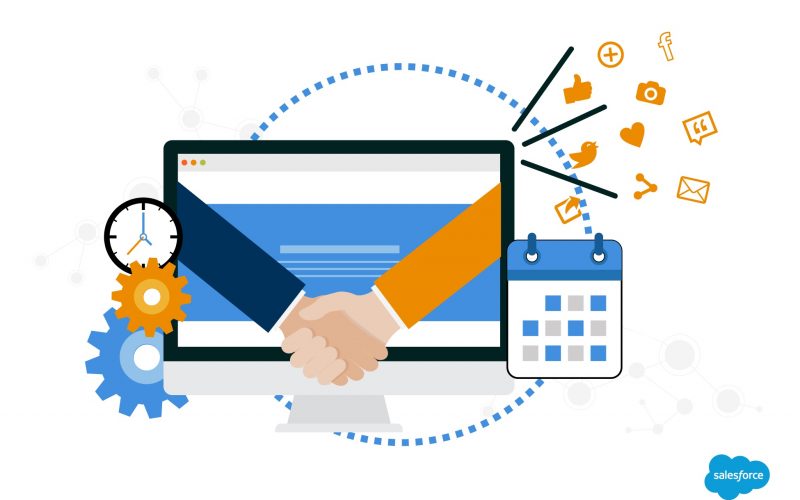Selling sales leads can be a profitable venture for a variety of companies or local businesses. Whether you’re in charge of marketing for an insurance company and need a way to get rid of excess leads or manage a marketing firm and need a new revenue stream, knowing how to sell leads could be incredibly useful. You might even opt to launch lead generation companies with the intention of selling leads to make money. In other words, learning how to sell leads, online and offline, will not only help you advance your business but will also allow you to help consumers in a variety of high-demand areas.
If any of these scenarios sound familiar, then you’ve come to the right spot. This post will guide you on how to make money selling leads online and offline, especially to companies and local businesses.
Overview
In simple terms, a lead is a person or company who is interested in what you’re selling. For the most part, contact information, such as an email address, a phone number, or even a social media account, is shared to demonstrate interest.
But then in recent times, several small businesses acquire a lot of consumer information, and it’s tempting to make money by selling mailing lists and leads to brokers. The first step in monetizing personal information collected from customers is to provide them the option to opt-in or out of having their information shared with third parties. The majority of list brokers demand that you confirm that your leads are opt-in.
Types of Leads
Immediate prospects and mailing list leads are the two forms of leads. Lead generator websites provide contact information and basic information on people who are in the market to buy a product in the near future, such as people looking for auto insurance online, to lead brokers and businesses. The freshness of these leads determines their value. Your mailing list or customer list, which you sell to list brokers, is used in a distinct form of selling leads. The demographics are the most crucial factor in these leads.
Information that is Required
Businesses buy leads from people who are eager for instant information or who fit a specific demographic profile that the company wants to sell to. For either type of lead, a name and email address is usually insufficient.
Basically, individual contact information, such as a name, email address, phone number, and full address, is the least information you need to obtain. Personal information, such as gender, date of birth, occupation, and net worth, is required by some lead brokers.
Determine how much information a lead broker requires to qualify an inquiry as a potential lead.
To discover a reliable lead broker, search online for “lead brokers” or contact the Direct Marketing Association. Learn about the types of information you should collect and the types of leads that are now popular before you try to collect information and sell leads.
Meanwhile, unless you’re selling a lead to a billionaire looking to buy a car, most lead brokers have a list size minimum that they’ll take. Once you’ve made your mailing list available to a list broker, you’ll be paid based on how many of your leads the broker purchases. Consider approaching local businesses directly to negotiate remuneration for leads you provide them if you have a modest list of local names or your business attracts clients who would make ideal referrals to other local firms.
The Advantages of Selling Leads
To a large extent, selling leads has a number of advantages that makes it a viable option to generate money from home, including:
- Low initial investment
- Product Creation is not required
- Service Delivery is not required
- Do not need investors or a bank loan.
- Don’t have to worry about shipping, storage, or stocking costs.
- Luxury of working from anywhere using any internet-connected device.
- Some lead generation techniques allow you to earn money while you sleep.
Several professionals find that selling leads is a wonderful way to supplement their income. Basically, Bloggers, entrepreneurs, coaches, and anyone else who can maintain a website will benefit from lead selling.
Drawbacks of Selling Leads
Selling leads as a business has a number of disadvantages, including:
- It may take some time to get adequate traffic, depending on how you generate leads.
- It’s possible that your niche is crowded.
- You may find it challenging to generate high-quality leads that sell for a higher price.
- You don’t have any influence over the product you’re advertising.
Lead generation, like any other business, has its pitfalls. So it is up to you to determine whether the advantages outweigh the disadvantages in your particular scenario.
What Are the Benefits of Starting a Lead Generation Business?
To develop and stay in business, most businesses rely on a consistent influx of leads. And because many businesses lack the resources or expertise to undertake lead generation in-house, they rely on lead generation firms to provide them with qualified leads.
Examples of popular businesses for lead generation include; loans, insurance, mortgages, and home improvement. These companies have an insatiable demand for leads. They are also a very competitive industry, with smaller businesses competing for customers with larger brands.
Lead generation is a part of the digital marketing sector, which is expected to be worth $120 billion by the end of 2023 in the United States.
Lead generation is basically the appropriate business venture for you if you want a business that is in great demand, can be handled by a one-person operation, and is easy to scale.
How Do Leads Get Sold?
To sell your leads, you’ll need to collect information via a web form. If you work on your own, you’ll need to create a landing page with a form that collects lead information. If you deal with an affiliate network or a lead generation firm, they may be able to offer you a white-labeled website to which you may send visitors in order to generate leads.
A simple website or landing page that has been established by networks for lead sellers is known as a white-labeled website. The network chooses the domain name, bases the site on existing lead generation sites, creates the lead generation form, and hosts it.
Depending on how the site was designed and the type of relationship you have with the network, you may or may not be able to alter the material on the site.
But then, leads are purchased in a variety of ways by different sectors. They also necessitate distinct lead information. It’s crucial to know what the lead buyer wants, as well as what they’re legally required to provide in a web form and other operational facts. This information may help the lead buyer avoid problems in the future.
Furthermore, as a lead seller, you must also ensure that consumers receive proper disclosures. The buyer or the network you’re working with can provide you with disclosure information directly. Also, it’s critical to adhere to all U.S. norms and regulations while gathering and sharing customer data. Reviewing the General Data Protection Regulation (GDPR) rules will provide you with a lot of the knowledge you require.
Read Also: SALES LEADS: How to Generate Sales Lead for any Business, Explained!!!
On the other hand, you’ll need to interface your website form with the network you’re selling to if you’re developing your own site. Most networks will offer technical assistance and assist you in integrating with their lead-buying system, sometimes known as a ping tree.
How a Ping Tree Works
Short-term loan lead purchasers frequently employ ping trees. A ping tree is used to conduct a live lead auction. Several buyers have partnered with the network or lead generation company. These purchasers supply lead filters, which are requirements they must meet in order to purchase a lead. They have the ability to set lead caps, as well as minimum and maximum bids.
The data from your online form is transmitted to the ping tree when you produce a lead. It then shows buyers a fraction of the data, starting at the top of the tree.
Buyers that have agreed to pay more per lead are at the top of the pine tree. As the lead progresses down the tree, it sells for less.
If a buyer’s lead buying cap has been reached, they will be removed from the ping tree and will not be shown any leads. This implies that only customers who are interested in buying leads will see your leads.
Read Also: Attraction Marketing: Detailed Guide to Gain More Leads
Although it may appear to be a lengthy procedure, the process of purchasing leads takes only seconds.
After submitting the form, the consumer is directed to a loading page where they are informed that their request is being processed. A user’s average wait time is less than a couple of minutes. If a customer has purchased their data, they will be directed to a thank you page.
You’ll be able to see the conversion in your affiliate dashboard if your lead is purchased. But, you’ll need to invest in tracking software if you’re not dealing directly with a network.
It’s critical to keep track of your revenue in order to optimize your campaigns. If your leads are selling for a low price, they may be of poor quality. To create more quality leads that sell at a higher price, you may need to modify the content you post or the targeting on your campaigns.
How to Make Money Selling Leads
The following are a couple of steps to follow to ensure selling your leads is successful.
#1. Make a Plan for Your Lead Offering
If you want to sell leads, you must first figure out exactly what your product will be. This entails deciding on one or more lead verticals to work in.
After you’ve chosen on one or more lead verticals, you’ll need to figure out which lead fields will go into each lead type. These are the fields you’ll collect on your lead form and offer to your lead purchasers along with each lead’s contact information.
If you’re unsure about the fields to include in your lead type, we can provide you with a list of standard fields for most lead kinds. Simply submit a request. Additionally, after adding a few lead buyers, you may need to finish your lead fields because certain buyers demand specific fields for the leads they purchase.
After you’ve decided on your lead verticals and lead fields to capture, you’ll need to figure out what kind of lead offers you’ll be making. This means you must determine if you want to sell leads in “packages” (for example, 100 leads per month) or invoice your customers for each individual lead they purchased the previous week or month. You must also determine whether you will sell leads exclusively (one buyer per lead), non-exclusively (numerous buyers per lead), or both, as well as the pricing structure for each.
#2. Getting Sales Leads – How To Do It
It’s time to get the leads you want to sell now that you’ve created a structure for your lead offering. There are two primary methods for obtaining leads.
Creating Leads from Scratch:
This is the most typical lead generation method, and it’s the one that most marketing professionals go with. This article, however, will not go into detail about specific lead creation tactics. And because each lead generator has its own set of strengths and opportunities, a lead-generating approach that works for one company may not work for another. Start here for a better understanding of lead generation.
Purchasing Leads:
To supply or enhance their lead flow, several lead sellers purchase leads. Purchasing real-time leads from another lead seller eliminate the need for you to maintain your own marketing efforts, instead, it allows you to use your network of buyers to identify a service provider for each lead you acquire. It’s vital to remember, though, that if you’re buying leads just to resell them, it’s in everyone’s best interests if you bring value to the process.
Before selling a lead to a buyer, many lead buyers use a call center to contact their purchased leads and check their information to correct any contradicting information. Call center verification is the term for this. Other businesses use a call center to simultaneously contact a lead and a lead buyer, introduce the lead to the buyer and transfer the live call to the lead buyer. Each of these alternatives adds value to the process, strengthening your service, increasing the lead’s experience, and guaranteeing that you aren’t just a middleman who can be quickly replaced.
What to Avoid When Getting Leads:
It’s also crucial to define exactly what we mean by “getting leads.” We’re not talking about harvesting email addresses from the internet or databases, buying cold email lists, or anything other than real-time lead generation. We cannot assist you if you are working with old data or lead details that were not recently provided by the leads in exchange for a specific service they wanted. Fresh, tailored, real-time leads are required for lead selling.
#3. Create a Buyers’ Network
The next stage is to build a network of buyers to purchase your leads once you’ve developed your lead offering and defined how you’ll obtain them. When it comes to developing your lead selling process, this is one of the most critical aspects. If you want to run a long-term lead selling business, you’ll need to put in a lot of time and effort, in the beginning, to discover and work with your lead buyers. Below are the types of networks available out there.
Buyers of End Service/Retail Leads:
When it comes to selling leads, the most important clients end service providers (also known as retail buyers). These are the buyers who intend to contact the leads directly and make a sales pitch to them. Retail buyers are the highest-paid lead purchasers on the market because they end service providers, but they are typically geographically limited or have certain lead requirements that limit the leads you can sell to them.
These could be buyers are insurance agents in the insurance sector. Contractors, on the other hand, are the purchasers in the home improvement market. So, before you begin your buyer research, you should have a clear idea of who you want to sell leads to.
Wholesale Buyers/Lead Aggregators:
Wholesale customers (or lead aggregators) buy leads with the goal of reselling them to their own network of buyers. Despite the fact that lead aggregators pay less than end-user/retail lead buyers, they might still be very valuable customers. They’re usually easier to spot and establish working connections with. They can also cover a larger number of leads than your retail buyers can.
What about a network for buying and selling leads?
There isn’t a standard lead network or exchange where you can “plugin” and sell leads. Despite the fact that many businesses have attempted to organize this, it usually fails for a variety of reasons. The first is that lead networks collect a percentage of each lead sale. This reduces profit margins in the lead sector, which are already thin.
The ownership of leads is the second major issue with communal lead networks or lead exchanges. The majority of lead exchanges are created by lead generation firms or lead vendors. This signifies that the data you’re sending across the network is extremely useful (if not critical) to the primary network provider.
In reality, everyone who submits leads to a lead exchange is voluntarily offering their leads to a rival, with the hope that the exchange will notify them of a sale and reimburse them appropriately. This is the most common reason why lead networks fail. This effectively eliminates the lead company’s selling power and requires it to rely on an external mechanism to obtain the best possible price for each lead. As a result, even if it starts with just a few distinct customers, the biggest and greatest lead organizations create their own buyer networks.
#4. Create a Logic for Lead Distribution
The real-time lead distribution used to be pretty uniform, but new distribution logic now provides you with a variety of alternatives for maximizing profitability and optimizing lead flow.
To begin, create filter sets for each of your clients that include not only the lead fields that each buyer accepts, but also the time of day/week that leads are accepted, pricing exclusions, and more. You can use these filter sets to create unique business rules that match real-time leads to the right lead buyer (s).
Furthermore, sophisticated lead distribution systems enable you to choose the distribution logic for each lead that matches several buyers.
Assume you generate a lead for vehicle insurance that corresponds to five potential buyers. Who gets the lead and how much does it go for?
There is no one-size-fits-all answer to this topic; instead, there are numerous lead distribution logic alternatives. To a large extent, they allow you to distribute your leads exactly as you want, matching each lead to the best possible buyer.
#5. Create Purchase Options for Leads
Finally, you must define and customize the lead purchasing choices that you provide to your customers. How may a client obtain a lead after purchasing? Will you automatically email the lead to the client, enter it into the client’s CRM, or store it in a buyer portal? While most buyers offer posting parameters that enable you to automatically enter every lead into their CRM or Lead Management System, you must determine what happens once a client purchases a lead.
How will you charge your client once they’ve purchased a lead? It’s also crucial to set up a structured billing arrangement. This states whether;
- you’ll charge for leads in real time,
- issue an invoice at the end of each week or month, or
- start an automated re-billing based on a time or trigger basis
Selling Leads Online
On the other hand, below are some crucial pieces of information you will need if you’re not sure if selling leads online might be a suitable business option. The seven benefits of selling leads online described below should help you make an informed selection and, perhaps, steer your company in the right direction.
Maintain Your Marketing Practices
One of the most appealing aspects of selling leads online is that it does not necessitate a significant change in the way you offer your products or services. It’s an added advantage if you’re a specialist in PPC or SEO. You can use those skills to increase the number of individuals who visit your landing pages and fill up your forms. It’s also great if you specialize in radio, television, or even billboards adverts. These techniques continue to increase inbound calls, route users to landing pages and produce more leads in general.
Provides You With a Product to Sell
You have a significant advantage over offering yourself as a service if you sell leads and calls online. It allows a product to be placed on a shelf. If you rely on finding organizations that will use your services, you will most likely face the ebb and flow of client acquisition, no matter how good you are at marketing and promotion. You will never be stuck waiting for the big account if you have a product to sell. You’ll always be able to run your own campaigns, and if your leads are good enough, buyers will be waiting on the other end.
Increased Customer Base
You are no longer limited by the number of clients you have because generating calls and web leads offers you a product to sell. Generally speaking, all buyers in the lead sector have the same conditions. As a result, every rational businessperson will generate leads based on common criteria that will satisfy the needs of practically every buyer. You can sell to a wide number of clients with a standard product, which not only promotes a more consistent bottom line but also allows you to be more selective with prices and selling patterns.
Additional Revenue Stream
Many businesses find that lead generating and lead selling online is a great way to supplement their present earnings. Lead generation gives you the freedom to conduct whatever campaigns you want and put in the time and effort you desire. As a result, selling leads online is an ideal extra revenue source for any marketing company wanting to boost overall revenue or offset seasonal slumps.
Take, for example, a traditional media or advertising company. This agency’s revenue is constrained by the stability of their clients’ marketing needs, even if they have numerous clients at any given moment. So, what if a handful of their clients slash their marketing expenditures or only advertise during the holiday season? For extended portions of the year, many accounts are completely idle, resulting in little incoming revenue for the agency. This agency can retain a more consistent income and even give itself an additional project to focus on during the slower seasons by implementing a simple year-round lead generation campaign.
More Flexibility in Pricing Structure
You have greater leverage to negotiate the pricing strategy you use if you sell leads online. If you’re pushing a product or offering marketing services for a single firm, you’re limited by the fact that you’re only marketing for that company and its price model. You can run the same campaign and sell to dozens of different buyers during the lead-generating process. You have more flexibility to determine not only the pricing strategy but the price itself, even on a client-by-client basis, because you are not bound by one offer or one client.
Execute the Campaigns You Desire
Another significant advantage of selling leads and calls online is the ability to market whatever you want, whenever you want. You’re no longer constrained by your advertiser’s creatives or your client’s constraints and viewpoints. Not only that, but you have the freedom to market in any vertical you desire. Granted, certain verticals offer better options and market space than others, but the idea remains the same. With unrestricted creative flexibility, you can market to your strengths.
Growth Opportunities
There are several prospects for growth when selling leads online. For one thing, the industry is fast expanding, and clients are still filling out forms and dialing 800 numbers at an alarming rate. Absolutely, there are more leads available now than there have ever been.
Is It Legal to Sell Leads?
Yes, it is completely lawful for real estate brokers to sell leads. However, attorneys say it is also feasible for professionals to break privacy rules. This is by selling the information of potential buyers and sellers to other agents.
Can You Make Money Selling Leads?
Leads are often quite lucrative. Better than the majority of other sources of income. If you have a website and can generate quality leads and make a lot of money if you choose the correct programs. Leads are usually paid in the range of $5 to $50 per lead.
How Do You Get Into Selling Leads?
The following are steps to follow when you wish to get into selling leads;
- Make a Plan for Your Lead Offering
- Getting Sales Leads – How To Do It
- Create a Buyers’ Network
- Create a Logic for Lead Distribution
- Build Purchase Options for Leads
What Are the Four Types of Leads?
Prospects are referred to as “hot leads,” “working leads,” “qualified leads,” or “nurturing leads” by certain business owners and sales leaders. That simply means they are leads who have expressed an interest in your business. You are now guiding them through the sales funnel with various approaches and plans.
What Are the 4 Pillars of Selling?
Honesty, Integrity, Knowledge, and Genuine Interest are the Four Pillars of Sales.
Related Articles
- Sell Your Business: How To Sell Your Business & Ideas Online
- HOW TO CHOOSE THE RIGHT REAL ESTATE CRM AS A REALTOR
- eBay Selling Fees: Pricing, Calculators and Best UK Practices
- [Revealed] 9 Steps to Selling Your Business in Australia
- Gift Card Exchange: 20 Best Gift Card Exchange for Cash in 2023






